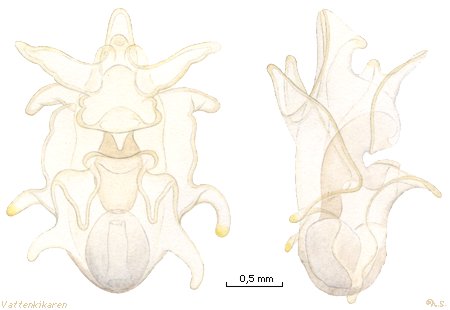 |
 |

 Distribution in scandinavian waters |
Maximum length: It is difficult finding
information about how large a starfish larva can be, but here you can
compare it with a hair. Appearance: Starfish larvae are transparent and occasionally can be coloured with a yellow or red tone. Older larvae carry winding bands furnished with cilia along the edges of the irregularly formed body and on certain outgrowths. Depth: From the surface to unknown depth. Environment: Pelagic. Misc: When the eggs from a great many creatures hatch, larvae appear. During this young stage the larvae do not resemble or have the same life style as their adult parents. Many starfish pass through several larvae stages. It is during the later stages that the larvae are easier to recognize. Starfish larvae are found in the sea during the warmer summer half of the year. They get their nourishment from the egg or by catching small organisms in the water. The food is caught, transported and sorted by the cilia furnished bands that are also used for swimming. Many of the larvae are eaten by suspension feeders. Read more about starfish reproduction! Classification: Starfish larvae belong to the starfish group under the echinodermata (spiny-skinned). |